Social Studies 5 to 6
Grade 5
Canadian Issues and Governance
Construct arguments defending the significance of individuals/groups, places, events, or developments (significance):
|
Sample activities:
|
- Search for:
- Artist, or name of an artist, eg.
- Emily Carr
- Writer, or name of a writer, eg.
- Joy Kogawa
- Fur trade in BC
- Maritime Fur Trade
- Land Based Fur Trade
- Chapter 2 of Far West, Fur trade in New Caledonia
- Canadian Pacific Railway in BC:
- Canadian Pacific Railway
- Chapter 4 of Far West, Building the Railway
- Gold Rushes in BC:
- Gold Rushes
- Chapter 3 of Far West, on the Gold Rush

Emily Carr in her studio, 1936. Harold Mortimer-Lamb/BC Archives D-06009
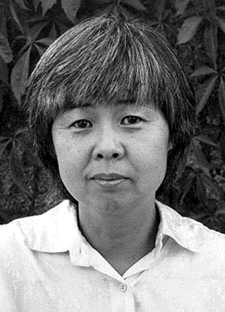
Joy Kogawa, writer.
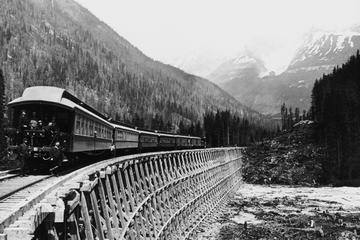
The railway connected British Columbia to the rest of Canada. Here is the first train between Montreal and the BC coast, 1886. Denley, Norman, Library and Archives Canada PA-066579
Take stakeholders’ perspectives on issues, developments, or events related to East and South Asian Immigration (perspective):
|
Sample activities:
|
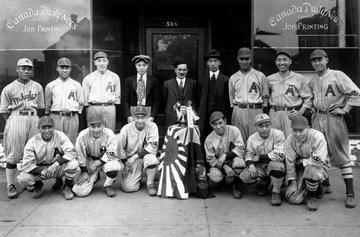
Above: From 1914 to 1941, the Asahi (a Japanese word meaning “morning sun”) was one of the best baseball teams in Vancouver. It was the pride of the Japanese community. All the best players wanted to belong. The team disbanded when most of the players were sent away from the coast during World War II. Sanmiya Family Collection. Japanese Canadian National Museum 94/41.018
Make ethical judgments about events, decisions, or actions that consider the conditions of a particular time and place, and assess appropriate ways to respond (ethical judgment):
Sample topics:
- Historical wrongs against East and South Asian immigrants:
- Chapter 6 of Far West, Asian Newcomers
- South Asians
- Komagata Maru
- Chinese
- Head tax
- Japanese
- Japanese Internment
- Chapter 7 of Far West, Treatment of the Japanese
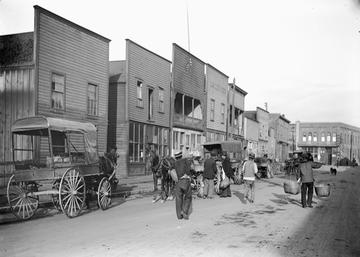
A street in Vancouver’s Chinatown in 1904. It is early morning and vegetable farmers have brought their produce to town by wagon to sell. Most Chinese people preferred to live in Chinatown among friends and family. At the same time, in Vancouver the Chinese were not allowed to own property outside Chinatown so they were more or less forced to live there. Vancouver Public Library 6729
- Indian Act
- Residential School System
- Internment of Ukrainians during World War I
- Internment of Japanese Canadians during World War II
- Japanese Internment
- Chapter 7 of Far West, Treatment of the Japanese
- Turning away of Jewish refugees prior to World War II
- Canada’s response to climate change
The changing nature of Canadian immigration over time:
Sample topics:
- Changing government policies about the origin of immigrants and the number allowed to come to Canada
- Immigration to BC, including East and South Asian immigration to BC
- Chapter 6 of Far West, Asian Newcomers
- Peoples of BC
- South Asians
- Chinese
- Head Tax
- Japanese
- The contributions of immigrants to Canada’s development (e.g., Chinese railway workers, Sikh loggers, Eastern European farmers, British investors)
- Chinese
- Chapter 12 of From the West Coast to the Western Front, Chinese Labour Corps
- Chapter 3 of Far West, Chinese Miners
- Dutch
- Poles
- Mennonites
- Peoples of BC
- Chapter 6 of Far West, Asian Newcomers
- South Asians
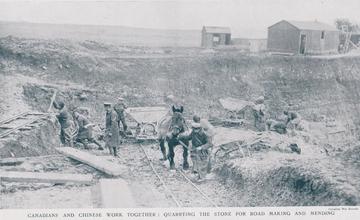
The Chinese labour corps were technically a non-combatant force, but saw plenty of action in their work near the front. From The Graphic Magazine, Mar. 16, 1918
- Push and pull factors
- Settlement pattern
- Growth of cities, provinces, and territories as a result of immigration
Key questions:
- Why did East and South Asians come to BC and Canada, and what challenges did they face?
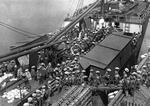
Chinese labourers arriving at William Head quarantine station during WWI. BC Archives G-01591
Past discriminatory government policies and actions, such as the Chinese Head Tax, the Komagata Maru incident, residential schools, and internments:
Sample topics:
- Historical wrongs against East and South Asian immigrants
- South Asians
- Komagata Maru
- Chinese
- Head tax
- Japanese
- Japanese Internment
- Chapter 7 of Far West, Treatment of the Japanese
- Indian Act
- Head Tax on Chinese immigrants
- Numbered treaties with First Peoples
- Treatment of Doukhobors
- Chapter 8 of Far West, The Doukhobors
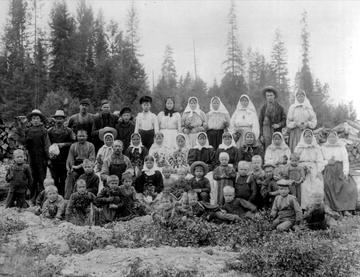
A group of Doukhobors in British Columbia around 1910. BC Archives A-02072
- 1884–85 famine
- 1907 Anti-Asian Riots
- Japanese and German internments
- Reduction or relocation of First Peoples reserves
- Ethnic minorities denied the vote
- Chapter 4 of Far West, Who could vote
Key questions:
- What types of discrimination have immigrants to Canada faced (e.g., cases of systemic discrimination by local, provincial, and federal levels of government)?
- How might Canadian society be different today if exclusionary policies toward immigrants from East and South Asia had not been developed during certain periods of history?
- What effects did residential schools have on First Peoples families and communities?
Human rights and responses to discrimination in Canadian society:
Sample topics:
- Racism
- Protest movements
Resources and economic development in different regions of Canada:
|
Sample activities:
|
First Peoples land ownership and use:
Sample topics:
- Treaties
- Douglas Treaties
- Aboriginal Rights
- BC Treaty Commission
- Nisga’a Treaty
- Chapter 9 of Far West, The Nisga’a Agreement
- Aboriginal Demography
- Burial grounds
- Housing
- Hunting and fishing
- Aboriginal Fishing
- Chapter 5 of Far West, Disappearing Fish
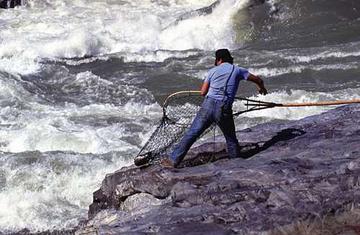
Aboriginal fisher netting salmon at Lillooet, 1993. Roy Luckow photo
- Land claims disputes
- Views of the Salish Sea, Empty Land or Stolen Land
- Aboriginal Rights
Key questions:
- How do First Peoples balance economic development with traditional uses of the land?
- How fair has BC’s treaty process been? Explain your answer.
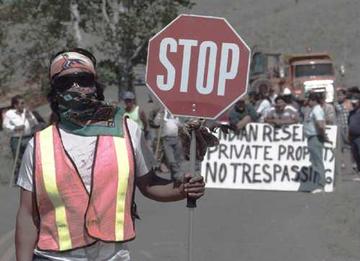
Masked Natives block Douglas Lake Road in a protest against fishing regulations on Douglas Lake Ranch, 1995. Ian Smith/Vancouver Sun
Take stakeholders’ perspectives on issues, developments, or events that are local or global (perspective):
|
Sample activities:
|
Global poverty and inequality issues, including class structure and gender:
Sample topics:
- Treatment of minority populations in Canada and in other cultures and societies you have studied (e.g., segregation, assimilation, integration, and pluralism; multiculturalism policies; settlement patterns; residential schools, South African apartheid, the Holocaust, internment of Japanese Canadians, Head Tax on Chinese immigrants; caste and class systems)I
- Chapter 6 of Far West, Asian Newcomers
- Residential Schools
- Japanese Internment and Chapter 7 of Far West, Treatment of the Japanese
- Chinese Head Tax
- South Asians
- Doukhobors and Chapter 8 of Far West, The Doukhobors
- Treatment of Indigenous people
Key questions:
-
How does discrimination and prejudice in modern Canadian society compare with that during other periods in Canada’s past or in other societies
(e.g., systemic discrimination, overt racism)?
Economic policies and resource management, including effects on indigenous peoples:
- Chapter 5 of Far West, on Resources and the Economy
Sample topics:
- Deforestation
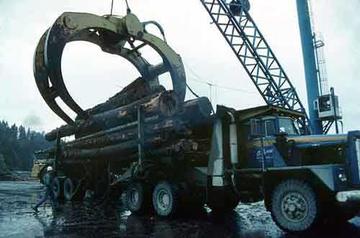
Logging truck being unloaded at Stillwater, near Powell River, 1994. The stiff-leg crane to which the grapple is attached is the largest in the world. Keith Thirkell photo
- Mining
- BC Mining
- BC Coal Mining
- Chapter 5 of Far West, Coal Was King
- BC Gold Mining
- BC Copper Mining
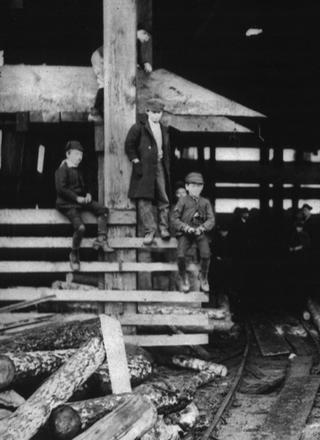
Young workers at the entrance of the Nanaimo coal mine shaft around 1870. British Columbia Archives C-03710
- Oil and Gas
- Fisheries
- Commercial Fishing
- Fish Hatcheries
- Aboriginal Fishing
- Chapter 5 of Far West, Disappearing Fish
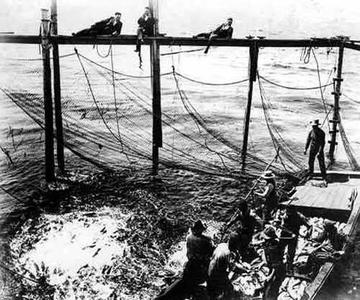
Brailing fish from a salmon trap, 1907. BC Archives B-06318
Key questions:
- How should decisions about economic policy and resource management be made?
- How should societies balance economic development with the protection of the environment?
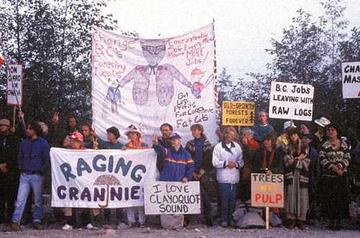
The Raging Grannies protesting logging in Clayoquot Sound, 1993. WCWC
Grade 6
Global Issues and Governance
Economic policies and resource management, including effects on indigenous peoples:
Sample topics:
- Deforestation
- Mining
- Oil and Gas
- Fisheries
- Commercial Fishing
- Aboriginal Fishing
- Chapter 5 of Far West, Disappearing Fish
- Infrastructure development
- Relocation of communities
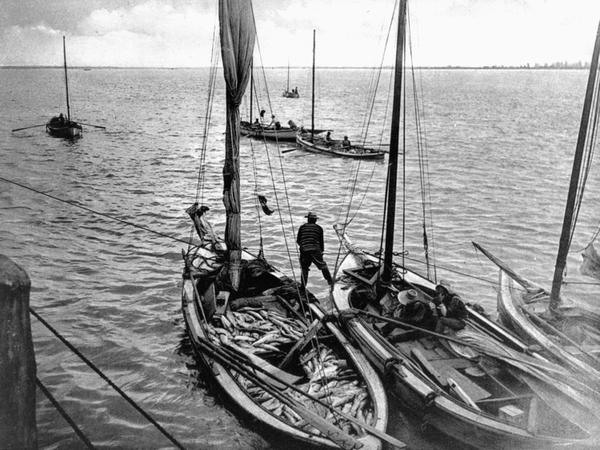
Gillnetters at work near the mouth of the Fraser River around 1910. Sometimes fishers stayed out in these small boats for several days. BC Archives B-08416
Key questions:
- How should decisions about economic policy and resource management be made?
- How should societies balance economic development with the protection of the environment?
